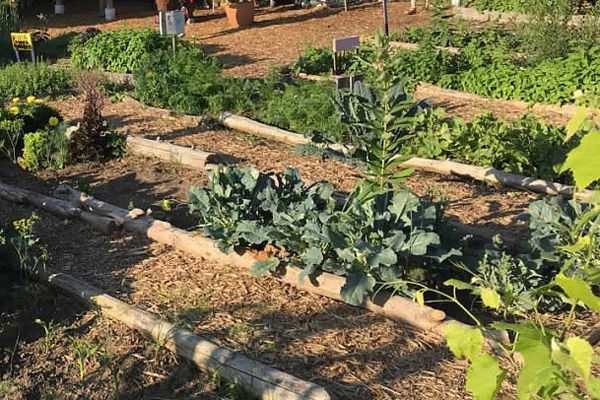City Blooming - Questions
City Blooming - Questions
Blog Article
The Greatest Guide To City Blooming
Table of ContentsNot known Details About City Blooming Not known Details About City Blooming The Buzz on City BloomingCity Blooming for BeginnersThe Of City Blooming
Intrigued in growing food for sale in the City of Chicago? Below is a list of often asked concerns relating to the rules and regulations that growers should take into consideration when intending a metropolitan agriculture job.
The zoning change does not modify any other codes taking care of composting, building licenses, buying or renting City had residential or commercial property, company licenses or environmental contamination. There are existing codes that manage these issues and they continue to be completely result and may apply to your task. Area gardens are usually possessed or managed by public entities, civic organizations or community-based companies and kept by volunteers.
Urban ranches grow food that is planned to be offered, either on a not-for-profit or for-profit basis. Due to their business objective, metropolitan ranches require a service certificate.
Some Known Facts About City Blooming.
Composting is allowed but only for plant material that is generated and utilized on website. The amount of compost material can not surpass 25 cubic yards at any offered time according to the criteria in 7-28-715 of the City's Municipal Code. Yes. Since the soil at many brand-new garden sites requires amending, compost, soil, timber chips, or other materials can be obtained to construct or improve the growing area - home and garden.

If a building authorization is called for then the hoophouse will certainly be considered an accessory structure. You can figure out more regarding the building authorization demands by speaking to the Department of Buildings. The 25,000-square-foot dimension limit is intended to stop a solitary area garden from controling a provided block or detracting from the block's existing residential or commercial character.
The limitation does not relate to yards located in Public Open Space (POS) districts. Can there be more than one community yard that is 25,000 square feet on a solitary block? Yes. The dimension limitation uses to individual gardens, not to specific blocks. No. Secure fencing is not required, nonetheless, gardens that have huge parking areas may be called for to set up fencing or other landscape design features.
City Blooming Things To Know Before You Get This
B1 & B2 districts require that all commercial usage activities be performed indoors. Is fencing needed for city ranches? Fencings might be needed, along with landscape design and screening, for certain car parking areas and outdoor work or storage locations depending on place and the specific task taking location.
Yes. Urban ranches need building permits and zoning approvals before building. Various other types of city evaluation may be called for depending upon details frameworks, tasks, dimension, landscape design, licensing, public health and stormwater monitoring issues. Most of these needs are recognized in the project layout or allowing procedure, nevertheless, the applicant might be liable to individually determine specific licenses or permits that may be called for.
Yes. The sort of license is identified by what is occurring at the website. The Division of Service Affairs and Consumer Security can assist figure out the specific kind of business certificate that's required. Yes. Off road vehicle parking is needed for many business projects in Chicago. The needed number of garage is based upon the number of employees servicing website and not the square footage of the expanding space.
Some Of City Blooming

A city ranch can sell garden compost material produced on site, nevertheless, the operation must conform with the laws in 7-28-715 of the Chicago Municipal Code. Aquaponic systems are enabled inside your home on metropolitan ranches in lots of zoning areas.
Up to 5 hives or nests of honey bees may be kept as an accessory usage. Nevertheless, beekeepers must sign official website up with the Illinois Department of Farming. To find out more about the recommended zoning change you might speak to the Department of Housing and Economic Growth, Bureau of Planning and Zoning at 312.744.8563.
Farming in cities and metropolitan areas A city farm in Chicago. Urban agriculture describes different practices of growing. https://www.huntingnet.com/forum/members/cityblooming.html, handling, and dispersing food in metropolitan locations. The term also applies to the location activities of animal husbandry, aquaculture, beekeeping, and horticulture in an urban context. Urban agriculture is distinguished from peri-urban agriculture, which takes place in country locations at the side of suburban areas.
Some Known Questions About City Blooming.
It can entail an activity of organic farmers, "foodies" and "locavores", that seek to develop social media networks founded on a common ethos of nature and neighborhood holism. These networks can develop using official institutional assistance, coming to be integrated right into local community planning as a "change town" motion for lasting metropolitan advancement.
Some of the very first evidence of metropolitan farming comes from Mesopotamia.
Report this page